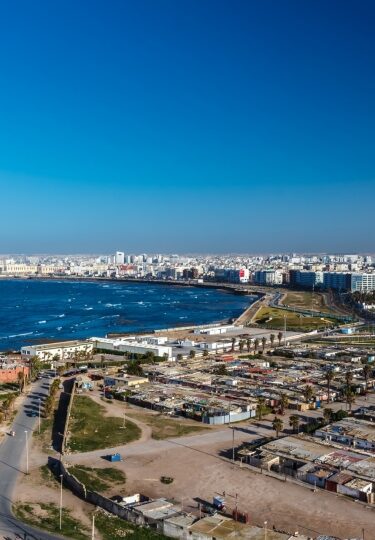The best time to visit Morocco depends upon what you want to do there. Morocco is a year-round destination thanks to its sunny weather and abundance of cultural attractions. Summer is a time for the beach, while the cooler winter months are ideal for sightseeing.
Morocco has several different climate zones. The Mediterranean coast has a typically Mediterranean climate of hot, dry summers and mild, wet winters. The Atlantic coast, which includes Tangier and Casablanca, is slightly hotter and drier, although the sea is cooler. In the south, there’s a desert climate, while the mountain ranges inland are much cooler, with snow in winter.
Visiting Morocco By Season
Summer
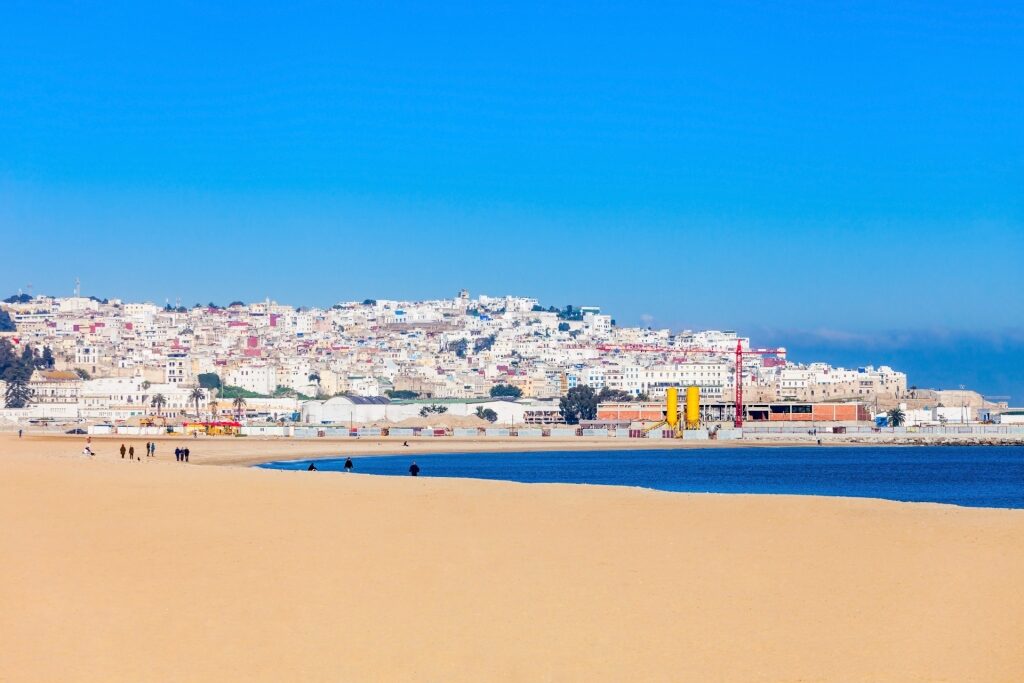
Beach in Tangier
Summer in Morocco is a time for relaxing on the beach and taking life slowly, as the locals do. Casablanca is hot and dry, with temperatures peaking in August at 74.8°F (26.6°C) and nights not much cooler. Tangier, too, is consistently hot from June through August and beyond.
There’s virtually no rain in July and August. Casablanca is cooled to an extent by Atlantic breezes, but hot winds can blow in from the desert, too. These hotter months are a time for locals to escape the cities and head to some of the best beaches in Morocco.
Fall
Fall brings pleasant temperatures in Morocco. In November, for example, Tangier is still enjoying average highs of 61.1°F (20.3°C), with Casablanca a degree or so warmer. Rainfall begins to pick up, welcomed by the locals after the long, dry summer.
Tangier, which is close to the Mediterranean, is wetter than the Atlantic coast. It receives around 4.9 inches (125mm) in November, but still averages six sunshine hours every day.
Winter
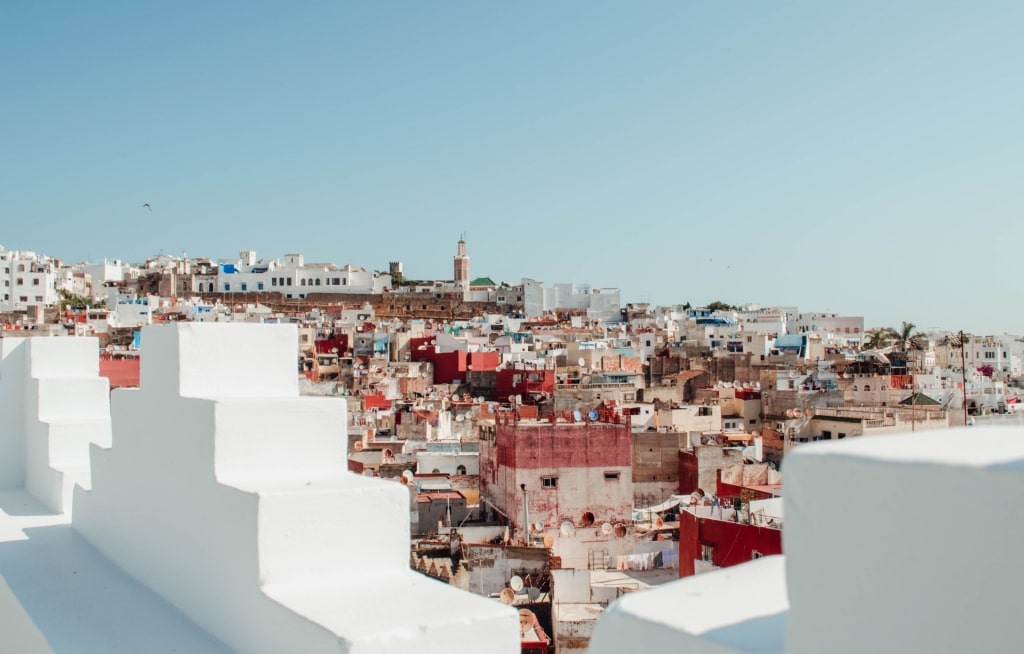
Tangier Medina
Morocco enjoys mild winters along the coast, although the High Atlas mountain range is often snowy; there’s even a ski resort there. Expect average daily highs in Tangier of 53.3°F (16.8°C) in January, the coolest month, and 56°F (17.6°C) in Casablanca, which is further south.
The wettest month in Tangier is December, with an average of 5.3 inches (135mm) of rain, while Casablanca receives slightly less. By February, this has dropped to just 2.4 inches (60mm).
Although it’s not really beach weather, winter is a popular time among visitors from colder northern countries who are in search of some winter sun.
Spring
The mercury begins to rise in spring, with March, April, and May gradually getting warmer. By May, you can expect pleasant average highs of 65.8°F (23.8°C) in Tangier and a slightly warmer 66.9°F (22.8°C) in Casablanca.
Spring is possibly the best time to go to Morocco, with wildflowers in bloom, increasingly lower precipitation, and long, sunny days. The sea is still cool for swimming, but the reality is that most visitors come to Morocco for its cultural riches, rather than time on the beach.
When Is Rainy Season?
Morocco’s coastal areas receive the most rain from October to January, with rainfall peaking in November. There are still plenty of sunny days, though, and these cooler months are ideal for sightseeing and shopping in the souks that Morocco is known for.
If you are visiting during the fall and winter, it’s a good idea to bring a light waterproof and something a little warmer for the evenings.
When Is High Season?
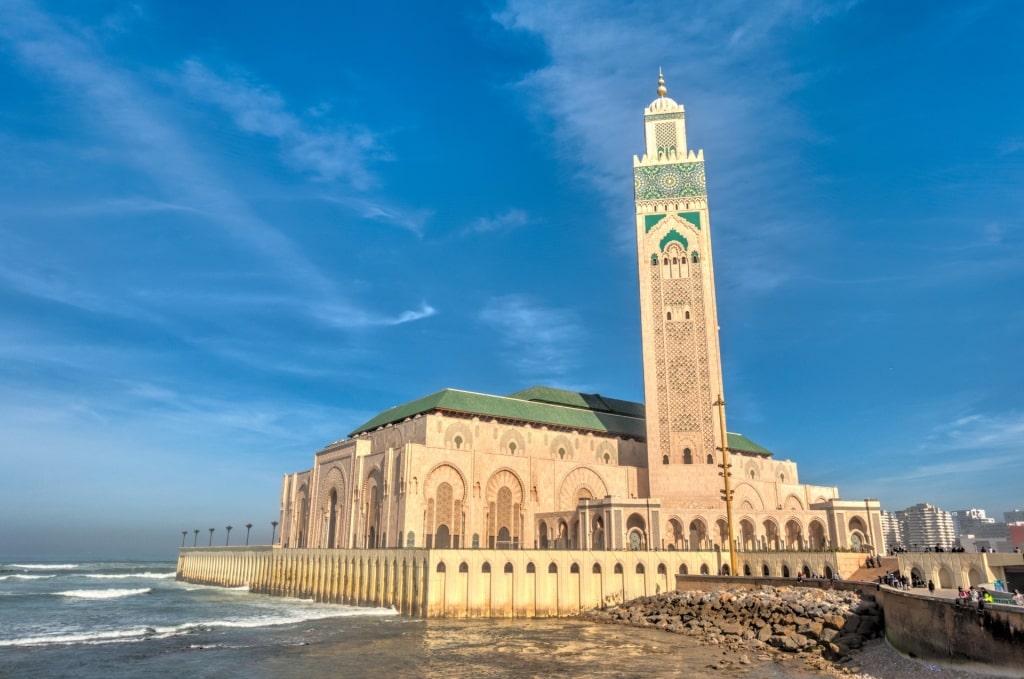
High season in Morocco depends on where you go. In July and August, Tangier is busy with day trippers coming across from Spain. Casablanca tends to be busy too, but with a mix of domestic travelers and visitors combining beach time with sightseeing. A lot of French people come to Morocco for their summer vacation (as it’s French speaking) and tend to travel in August.
High season for cultural tourism is the cooler months, from April to June and in September and October, but in terms of visitor numbers, July and August are busier.
There’s also a peak in domestic tourism during Eid al-Fitr, the holiday that marks the end of Ramadan. This moves every year as it is based on the lunar calendar, but Eid can be a great time to visit Morocco as there’s an air of celebration after a month of fasting.
When Is Shoulder Season?
Morocco’s shoulder season on the coast is the warm spring months from mid-March to May and the fall, particularly October and November. These two periods are outside the hottest months, when visitors come for the beaches, but are still perfect for sightseeing and shopping.
Expect warm, sunny days in spring. In fall, there’s more likelihood of rain, but on dry days it will still be warm enough to enjoy strolling through the souks and sipping mint tea in an outdoor café.
When Is Low Season?
The quietest season on the Atlantic and Mediterranean coasts is from December to early March, when the weather is cooler. But the country’s big cities are buzzing communities year-round, so whenever you visit, there will be plenty of places to see and things to do in Morocco.
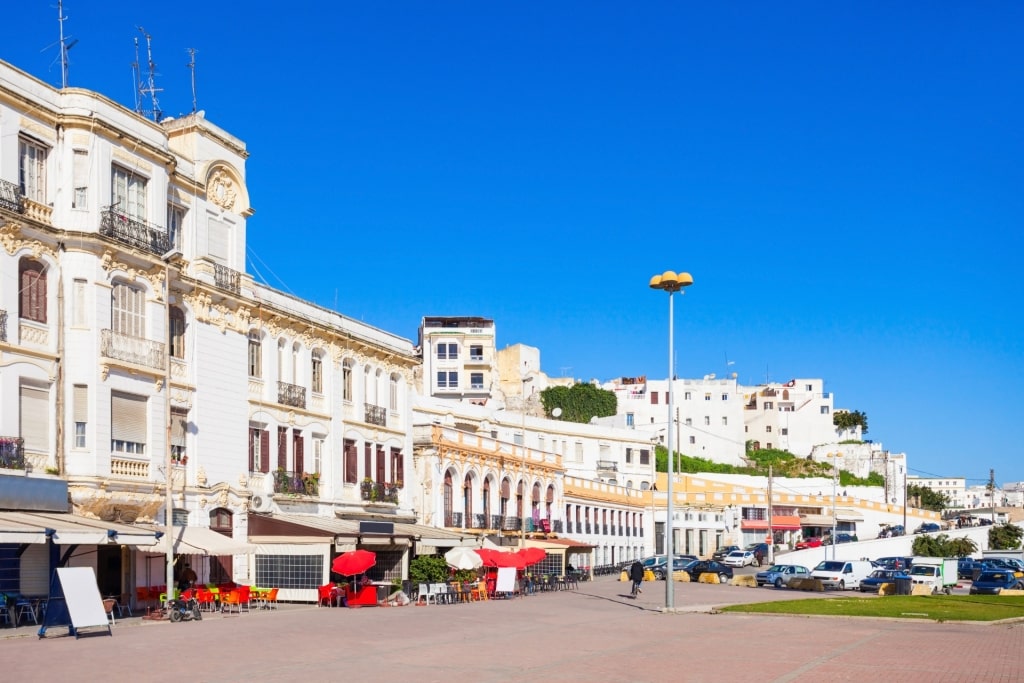
Tangier
Experience the rich culture of Morocco on a cruise with Celebrity. Browse our Morocco cruises and plan your next adventure.
